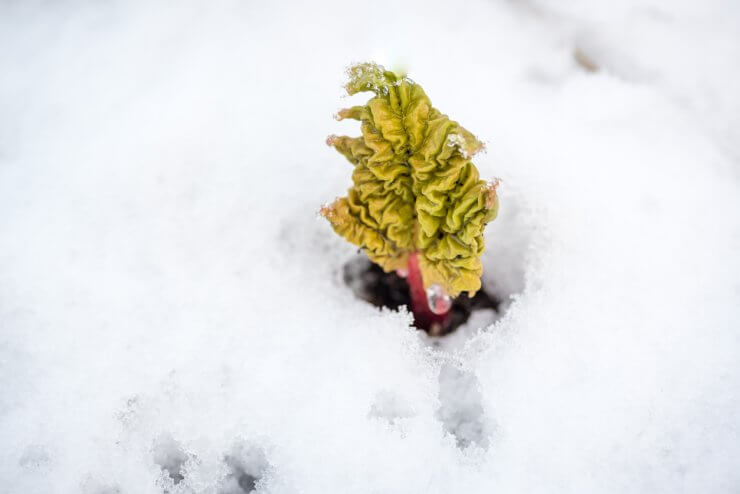
Cold-hardy rhubarb plan in snow
Rhubarb needs about 500 hours of temperatures below 40 degrees F in order to enter dormancy to muster its energy to produce new buds in the spring; if you hear gardeners talking about chill hours, that’s what this is. Rhubarb is a very cold-hardy plant; it can deal with temperatures as low as -20 degrees F. After your first hard frost, remove the last remaining stalks on the plant and add them to the compost pile. Spread a 2- to 3-inch layer of compost, leaves, or straw over your plants to keep the roots from drying out. One benefit of using compost is that it will slowly release some nutrients into the soil over the winter, and your rhubarb certainly won’t mind that.
In the spring, carefully remove any remaining material to give your rhubarb room to bud and grow. If you’ve used compost as your insulator, you’re likely to find there’s not a whole lot of compost left. But still, be careful to completely remove any material from around the base of the plant. Once the last frost has passed, you want to avoid having any mulch-like material near the stems and crown to avoid crown or root rot.
How do you prepare your rhubarb for winter? What type of insulator do you use? Let us know your tips for keeping rhubarb healthy through the cold winter months.


 Previous
Previous

